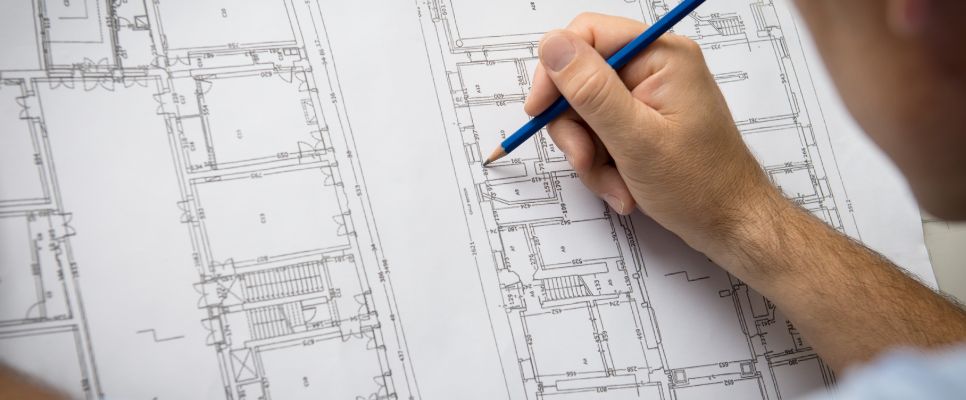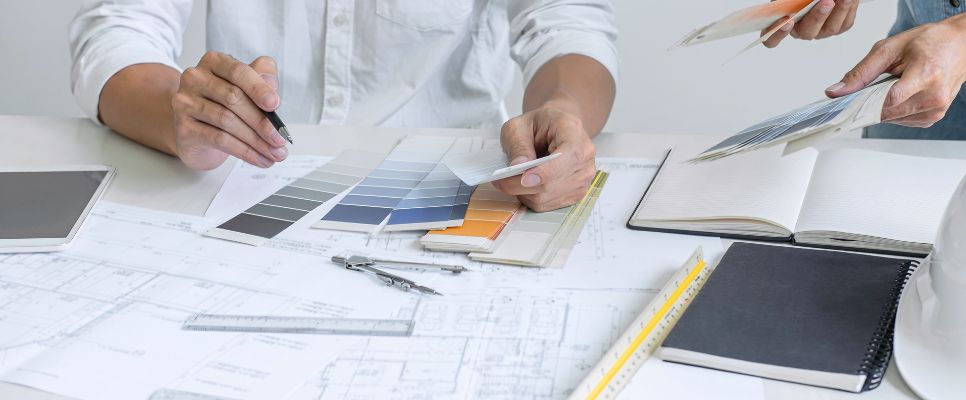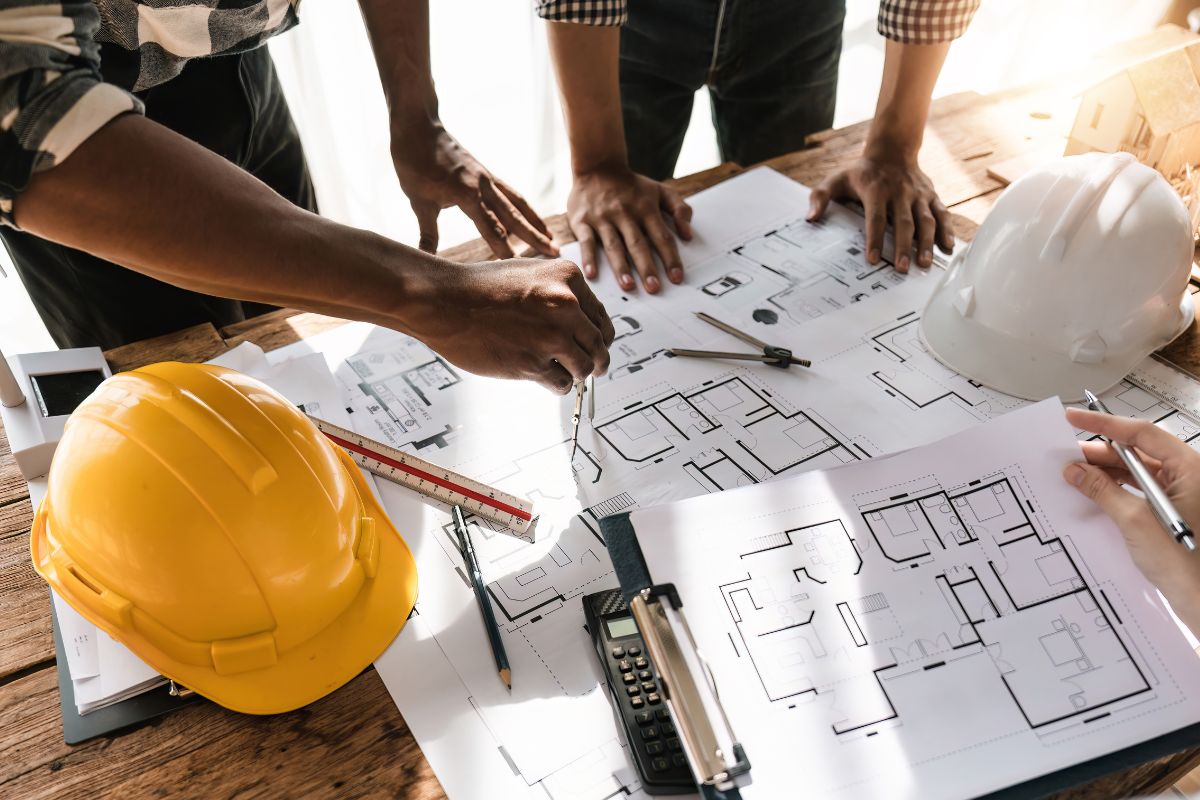The value of architectural design services must be known to the clients and the architects. Without building designers and architects, designs cannot be conceived into useful and eye-catching buildings based on concepts. The magnitude of the project, the complexity involved in the designing, the exposure of the architect, and the location, can all considerably affect the cost.
Architects are designers, but they are professionally trained and licensed to work on designs that are complex and need to adhere to the set regulations. For smaller-scale projects, however, building designers frequently specialize in practical and affordable design solutions. The cost is one of the major factors that should be considered when choosing between an architect and a building designer. Due to their qualifications and the scope of work, architects tend to charge higher rates, making them ideal for complex or large-scale projects. Building designers offer quality designs at a cheaper price.
Being aware of cost variations helps you make informed decisions about the project's complexity, budget, and compliance needs, and this is what this guide helps you the most with.
Who Is A Building Designer?
A building designer is a qualified professional who devises and creates residential, commercial, and industrial structures with the utmost utility, beauty, and meeting the building standards. They specialize in offering efficient design solutions on a variety of construction projects where the gap falls between draft people and architects.
- Roles and Responsibilities
Elevations, structural details, and floor plans are all produced by building designers. They take energy efficiency, material choice, and environmental sustainability into account. To make sure designs satisfy functional requirements and legal requirements, they work in tandem with customers, engineers, and builders. Site evaluations, feasibility studies, and adherence to regional building codes are among their duties.
- Qualifications and Licensing Requirements
In Australia, a building designer usually possesses a diploma or advanced diploma in building design, which is essentially architecture. Registration, in particular with trade organizations such as the Australian Institute of Building Designers (AIBD) or the Building Designers Association of Australia (BDAA), is required in some jurisdictions. States have different licensing requirements; Victoria, Queensland, and New South Wales have the strictest laws.
- Types of projects
Residential residences, townhouses, multi-unit projects, commercial structures, additions, and renovations are all handled by building designers. In addition, they work on sustainable housing solutions and interior fit-outs, guaranteeing creative and economical designs that satisfy customer demands and industry norms.

Who Is An Architect?
A qualified practitioner who designs buildings and structures while balancing safety, usability, and beauty is called an architect. They ensure adherence to environmental requirements and building rules while converting customer aspirations into workable plans.
Roles and Responsibilities
The entire process of design and construction is managed by architects. Among their duties are:
- Designing with the client's needs and location limitations in mind.
- Use CAD software to produce intricate drawings and 3D models.
- Guaranteeing both structural soundness and adherence to regional laws.
- Working together to complete projects efficiently with engineers, contractors, and designers.
- Overseeing construction to guarantee quality and design compliance.
Academic Experience and Licensing
Being an architect requires that one:
- Get a degree in architecture, either a bachelor's or master's, from a recognized university.
- Under the guidance of seasoned architects, finish a hands-on internship.
- A license can only be obtained by passing the Architect Registration Examination (ARE).
Types of Projects
Among the many areas in which architects specialize are:
- Apartments and houses with residential architecture
- Architecture for commercial buildings (offices, retail spaces)
- Industrial design (warehouses, factories)
- Architecture for landscapes (parks, gardens)
- Interior architecture (designs for functional spaces)
Key Difference Between An Architect And A Building Designer
Design scope and complexity:
- Architects: They are skilled in managing intricate, expansive projects, such as custom-built buildings, upscale residences, and commercial buildings. Their priorities are sustainability, usefulness, and beauty.
- Building Designers: Smaller home improvement and remodelling projects are the specialty of building designers. They may lack the knowledge necessary for complex structural details, but they offer useful designs that are adapted to the needs of their clients.
Regulatory and Council Approval Knowledge
- Architects: Familiar with zoning regulations, construction codes, and compliance standards. By overseeing planning approvals, they may make sure plans adhere to all applicable laws and environmental regulations.
- Building Designers: Although they are aware of the rules, building designers can require further advice from experts for intricate approvals. Complying with local residential building requirements is typically their main concern.
Premium Services vs. Cost-Effectiveness
- Architects: Because of their considerable training, licenses, and meticulous design approach, architects provide premium services and frequently charge higher costs. Their participation at all project stages may raise final expenses.
- Building Designers: More economical for typical home renovations. They offer cost-effective, useful designs without the hefty fees that come with hiring an architect.
Budget, regulatory requirements, and project complexity all play a role in the decision between an architect and a building designer. Architects are best suited for intricate, high-end projects that need careful planning while building designers provide more reasonably priced options for simpler ideas.
Cost Of Hiring A Building Designer In Australia
The size, complexity, and location of the project all affect how much it costs to hire a building designer in Australia. While fixed project expenses normally vary from $2,000 to $15,000,
Factors Affecting Pricing
- Hourly Cost: Building designers typically charge between $50 and $150 per hour.
- Project Size and Complexity: Larger and more complex designs are more expensive.
- Design Services: Full-service design, which includes approvals and 3D modelling, is more expensive.
- Location: Because of demand and the cost of living, prices differ by state and city.
Cost by State
- Melbourne and Sydney: $5,000 to $15,000 per project, or $80 to $150 per hour.
- Perth and Brisbane: $4,000 to $12,000 per project, or $70 to $130 per hour.
- Adelaide and Hobart: $50 to $100 per hour in Adelaide and Hobart or $3,000 to $10,000 per project
Seek advice from regional building designers for accurate estimates.
Cost Of Hiring An Architect In Australia
The amount to be spent hiring an architect in Australia varies due to several factors such as project scope, location, and the structure of the pricing system. Minor projects range between $2,500 to $8,000. In comparison, a large residential design could be around $15,000 up to $50,000. While fixed prices are associated with particular services, 0hourly rates range from $80 to $300. For full-service projects, percentage-based pricing is customary, ranging from 8% to 15% of construction expenses.
States have different prices, with Sydney and Melbourne typically having greater prices than other places. Employing an architect is a wise investment in a high-quality building since it guarantees professional design, compliance, and project efficiency.
Architect Vs. Building Designer: Cost Comparison
The final cost of a project is greatly influenced by the decision between an architect and a building designer. Because they are highly qualified and have received substantial training, architects usually charge higher prices. Their hourly charges might vary from $80 to $300, or 5% to 15% of the whole cost of building. On the other hand, building designers charge between $50 and $150 per hour, or 2% to 8% of the project cost, and concentrate on finding workable design solutions without a formal architectural license.
Differences in Cost Between Small and Large Projects
Often, hiring a construction designer is more economical for smaller projects (such as house remodelling or one-room additions). They can keep costs down with their streamlined strategy and cheaper hourly rates. To justify their increased rates, architects provide more expertise in structural integrity, energy efficiency, and design complexity for large-scale projects (such as multi-story residences or commercial structures).

Long-Term Financial Gains From Each Choice
The initial cost savings from engaging a building designer may be offset over time by trade-offs in sustainability and structural innovation. For complex projects, architects are a better investment because of their knowledge of cutting-edge materials and space efficiency, which can provide designs that increase resale value and lower future energy and maintenance expenses.
When Architects Are Better Than Building Designers (and Vice Versa)
For projects requiring structural engineering, commercial buildings, or upscale, intricate, or custom-designed homes, pick an architect. Select a building designer for affordable home renovations, additions, or jobs where sophisticated architectural knowledge is not required.
The choice is ultimately based on the long-term objectives, budget, and complexity of the project.
Hidden Or Additional Costs To Consider
Your budget may be impacted by unforeseen or extra expenses while organizing a building or remodelling project.
- Permits and council permissions: This differs depending on the project's kind and location, and it is one significant cost. Unexpected costs may be added to applications for zoning approvals, building permits, and compliance certifications.
- Site visits and project modifications: These are additional expenses to take into account. Multiple site inspections or revisions to original designs may incur fees for architects, engineers, and contractors, particularly if unanticipated problems occur. These changes may result in longer deadlines and higher labour expenses.
- Consultant expenses and structural engineering: These are also important but sometimes disregarded. Particularly for load-bearing structures, foundations, and intricate designs, structural engineers guarantee safety and compliance. The total cost may also increase if consultants are needed for environmental impact studies, acoustics, or energy efficiency.
A smooth and well-planned project is ensured by anticipating these expenses and avoiding financial surprises.
Conclusion
Project scope, location, experience, and design complexity all affect building designer expenses. You should budget between $50 and $250 per hour, or between $2,000 and $15,000 or more per job. To cut expenses, precisely describe your design requirements, use pre-made plans, evaluate estimates, and collaborate with a talented but reasonably priced designer.
Long-term costs can be decreased by giving priority to sustainable materials and effective designs. Effective planning guarantees high-quality outcomes without going over budget.









